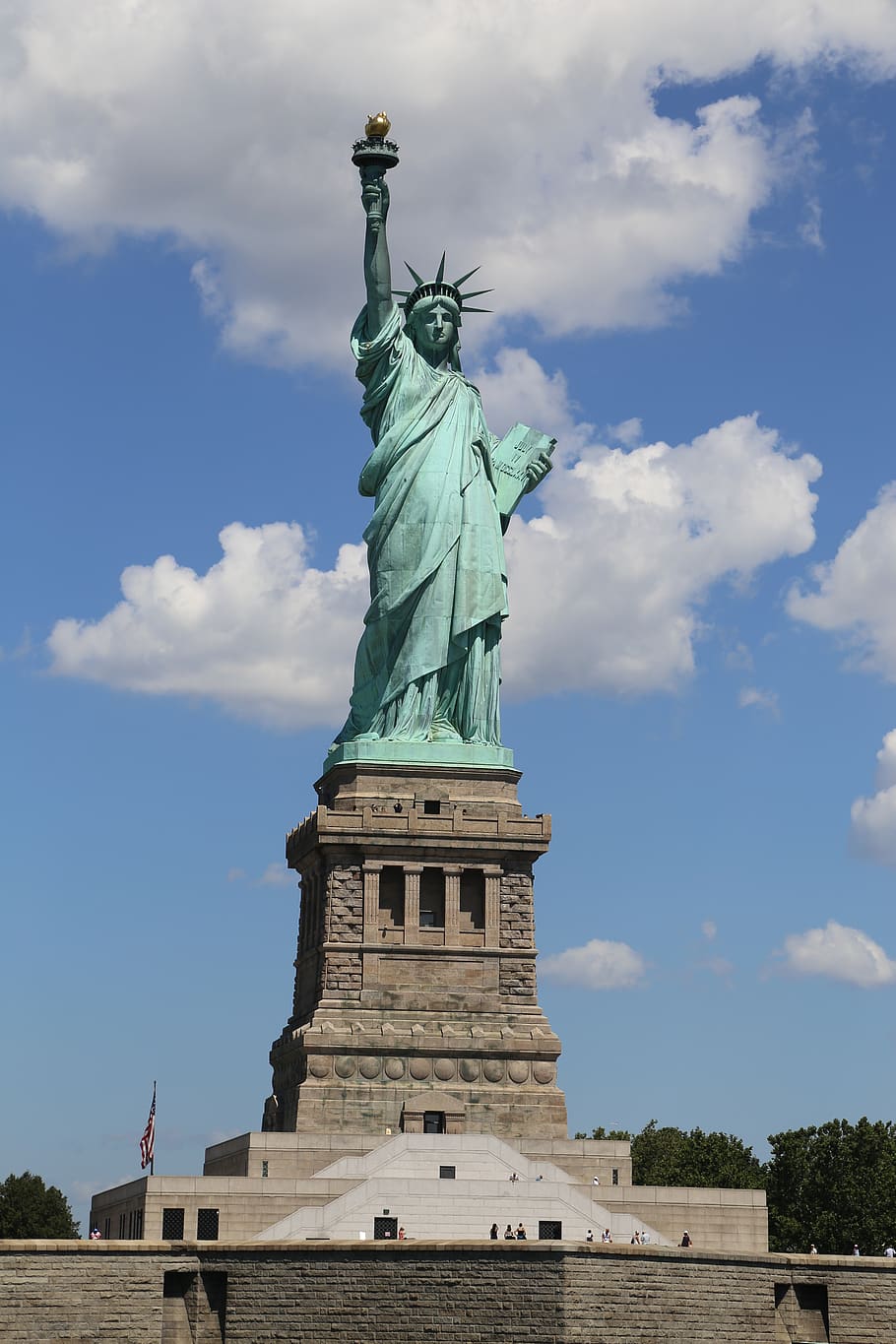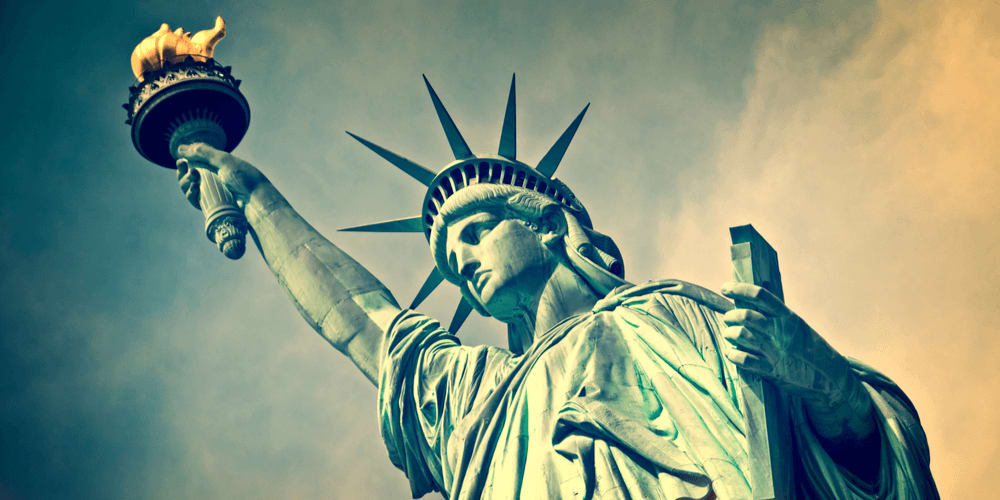When people think about freedom, one of the first things that come to mind is the Statue of Liberty. It’s not just a statue—it’s a symbol that transcends borders, languages, and cultures. Standing tall at 151 feet in New York Harbor, this iconic monument has been welcoming millions of visitors and immigrants since 1876. But what exactly does the Statue of Liberty represent? Let’s dive deep into its rich symbolism and uncover the layers of meaning behind this global icon.
The Statue of Liberty isn’t just a tourist attraction; it’s a powerful reminder of the values we hold dear as humans. From the torch held high to the broken chains at her feet, every detail tells a story. Whether you’re an American citizen or someone from another part of the world, the message of liberty resonates universally.
So why should you care about the symbolism of the Statue of Liberty? Because understanding its meaning can inspire us to embrace the ideals of freedom, democracy, and opportunity. In today’s world, these principles matter more than ever. Let’s explore the layers of symbolism that make this statue so special.
Table of Contents
- The History Behind the Statue of Liberty
- Unpacking the Symbolism of the Statue of Liberty
- The Torch: A Beacon of Freedom
- The Tablet: Knowledge and Progress
- The Broken Chains: Freedom From Oppression
- The Robe: Timelessness and Grace
- The Crown: Seven Continents, Seven Seas
- The Genius Behind the Design
- Global Impact of the Statue of Liberty
- The Lasting Legacy of Liberty
The History Behind the Statue of Liberty
The Statue of Liberty was a gift from France to the United States, celebrating the centennial of American independence. Designed by French sculptor Frédéric Auguste Bartholdi and engineered by Gustave Eiffel, the statue took over a decade to complete. It was officially unveiled on October 28, 1886, and has since become a symbol of hope for countless individuals seeking a better life.
But did you know that the statue almost didn’t happen? Fundraising efforts in both France and the U.S. faced significant challenges. In fact, it was only through grassroots campaigns and donations from everyday citizens that the project came to fruition. This collaborative effort highlights the power of unity and shared vision, adding another layer of symbolism to the statue.
Unpacking the Symbolism of the Statue of Liberty
The Statue of Liberty is more than just a copper structure; it’s a masterpiece of symbolism. Every element of the statue carries meaning, from the pedestal to the crown. Let’s break down some of the key symbols that make this monument so profound.
The Torch: A Beacon of Freedom
One of the most recognizable features of the Statue of Liberty is her torch. Held high above her head, the torch represents enlightenment and the pursuit of knowledge. It serves as a beacon of hope, guiding those who seek freedom and opportunity.
In 1984, the original torch was replaced due to structural damage. The new torch features a golden flame, reflecting sunlight during the day and illuminated at night. This modern update ensures that the statue continues to shine brightly as a symbol of hope for generations to come.
The Tablet: Knowledge and Progress
In her left hand, Lady Liberty holds a tablet inscribed with the date July 4, 1776, commemorating the signing of the Declaration of Independence. The tablet symbolizes the importance of knowledge and education in shaping a free society. Without understanding our history and principles, true liberty cannot be achieved.
Interestingly, the tablet also serves as a reminder of the connection between the United States and France. The date is written in Roman numerals, a nod to classical traditions and the shared heritage of democracy.
The Broken Chains: Freedom From Oppression
At the base of the statue, you’ll notice broken chains lying at Lady Liberty’s feet. These chains represent the abolition of slavery and the fight against oppression. They serve as a powerful reminder that freedom is not just about personal liberty but also about justice and equality for all.
- Broken chains symbolize the end of slavery in America.
- They remind us that freedom requires ongoing effort and vigilance.
- This detail underscores the statue’s role as a symbol of human rights.
The Robe: Timelessness and Grace
Lady Liberty’s flowing robe adds an element of grace and elegance to her presence. The robe is modeled after classical Greek and Roman garments, emphasizing the timeless nature of the ideals she represents. Just as the robe drapes beautifully around her form, the principles of freedom and democracy endure through the ages.
Bartholdi’s attention to detail in designing the robe ensures that the statue remains visually striking from any angle. It’s a testament to the artistry and craftsmanship that went into creating this iconic monument.
The Crown: Seven Continents, Seven Seas
Perched atop Lady Liberty’s head is a crown adorned with seven rays. Each ray represents one of the seven continents and the seven seas, symbolizing the global reach of liberty. This design choice reflects the universal appeal of the statue and its message of freedom.
Visitors who climb to the crown are treated to breathtaking views of New York Harbor. However, access to the crown is limited due to safety concerns, making it a coveted experience for those lucky enough to secure tickets.
The Genius Behind the Design
The creation of the Statue of Liberty was no small feat. Frédéric Auguste Bartholdi, the mastermind behind the design, drew inspiration from ancient statues like the Colossus of Rhodes. He worked closely with Gustave Eiffel, the engineer behind the Eiffel Tower, to ensure the statue could withstand the test of time.
One of the most impressive aspects of the design is the use of copper sheets, which were hammered into shape using a technique called repoussé. Over time, the copper oxidized, giving the statue its distinctive green patina. This natural process adds to the statue’s beauty and resilience.
Building Challenges and Triumphs
Constructing the Statue of Liberty presented numerous challenges. The statue had to be shipped in pieces from France to the United States, where it was assembled on Bedloe’s Island (now Liberty Island). Despite logistical hurdles and financial difficulties, the project was completed thanks to the dedication of countless individuals.
Global Impact of the Statue of Liberty
The Statue of Liberty has inspired countless replicas and tributes around the world. From Paris to Tokyo, people have recreated this iconic monument to celebrate the values it represents. Its influence extends beyond physical replicas, inspiring art, literature, and even political movements.
In a world where freedom is often taken for granted, the Statue of Liberty serves as a powerful reminder of the struggles and sacrifices required to maintain it. It encourages us to cherish our liberties and strive for a more just and equitable society.
The Lasting Legacy of Liberty
The symbolism of the Statue of Liberty continues to resonate with people across the globe. Whether you’re an immigrant seeking a new life or a citizen reflecting on your freedoms, the statue offers a message of hope and inspiration. It reminds us that liberty is not just a privilege but a responsibility.
As we look to the future, the Statue of Liberty stands as a beacon of possibility. It challenges us to uphold the values it represents and to work towards a world where everyone can enjoy the benefits of freedom and equality.
Key Takeaways
- The Statue of Liberty symbolizes freedom, democracy, and opportunity.
- Every detail of the statue carries meaning, from the torch to the broken chains.
- Its history and design reflect the collaboration and determination of countless individuals.
- The statue’s global impact highlights the universal appeal of its message.
Call to Action
Now that you’ve learned about the profound symbolism of the Statue of Liberty, take a moment to reflect on what freedom means to you. Share your thoughts in the comments below or visit Liberty Island to experience the statue firsthand. Together, let’s continue to uphold the values this iconic monument represents.
And don’t forget to explore other articles on our site for more fascinating insights into history, culture, and beyond. Stay curious, stay inspired!


